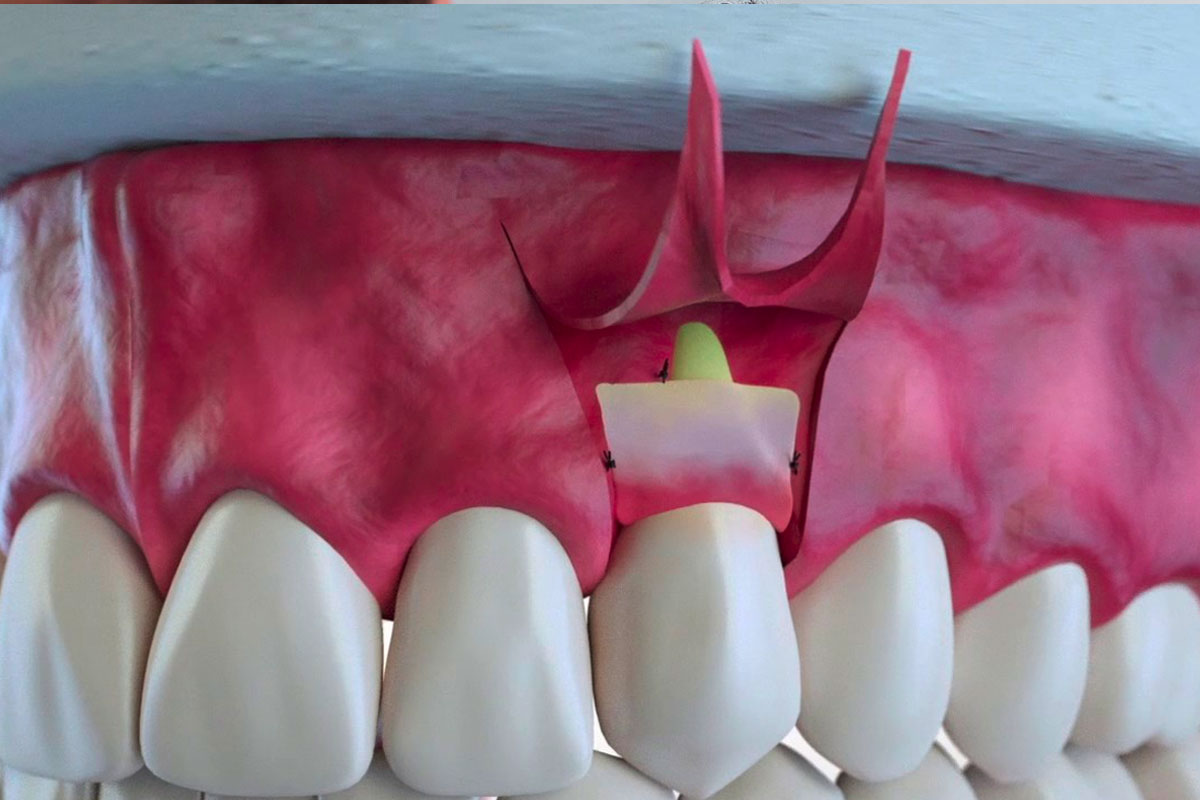Are you tired of hiding your smile because of receding gums? Do you dream of restoring your dental health and regaining your confidence? Look no further, because a connective tissue graft could be the solution you’ve been searching for.
What is a Connective Tissue Graft?
A connective tissue graft is a procedure aimed at addressing gum recession, a condition where gum tissue around teeth wears away, exposing tooth roots and creating gaps. This can result from factors like periodontal disease, aggressive brushing, genetics, and hormonal changes. The graft involves taking tissue, usually from the mouth’s roof, and placing it on the recessed area. This tissue acts as a protective cover, stimulating new gum tissue growth. Periodontists or oral surgeons perform the procedure, with connective tissue grafts being the gold standard for treating gum recession. They offer lasting results, enhance aesthetics and oral health, boast high success rates, and are generally well-tolerated by patients.
How Painful is a Connective Tissue Graft?
Patients often worry about the pain associated with a connective tissue graft procedure, but modern techniques and anaesthesia ensure minimal discomfort. Before the surgery, your dentist will use local anaesthesia to numb the treatment area, preventing pain during the procedure. Additional sedation or general anaesthesia may be considered for more extensive or complex cases. Afterward, you may have some swelling and discomfort, manageable with over-the-counter pain relievers and ice packs. Pain tolerance and recovery experiences can vary, but the benefits of the procedure typically outweigh temporary discomfort.
Connective Tissue Graft Procedure
The connective tissue graft procedure involves several essential steps to achieve the best results. While the specifics can vary based on your case and your dentist’s approach, here’s a general overview:
- Consultation and Evaluation: You’ll start with an initial consultation where your dentist or periodontist assesses your oral health, discusses your treatment goals, and explains the procedure.
- Preparation and Anesthesia: On the procedure day, you’ll be made comfortable, and the surgical area will be cleaned. Local anaesthesia will be administered to ensure you won’t feel any pain.
- Tissue Harvesting: Typically, a small piece of tissue is taken from the roof of your mouth (donor tissue) using a scalpel or laser. The donor site is sutured closed, and the tissue is prepared for grafting.
- Graft Placement: Your dentist creates a small incision where your gums have receded and places the donor tissue over the exposed tooth roots, securing it with sutures. This protects the area and encourages new gum tissue growth.
- Post-Operative Care: After the procedure, your dentist will provide detailed care instructions, which may include dietary restrictions, proper oral hygiene practices, and prescribed medications. Following these instructions is crucial for the best outcome.
The procedure typically takes 1-2 hours, depending on the extent of grafting needed. Although it may seem lengthy, the life-changing benefits of the procedure make it worthwhile.
Connective Tissue Graft Recovery and Post Care
Proper post-operative care following a connective tissue graft is vital for a successful recovery and optimal results. Here are key tips to follow during the recovery phase:
- Take Prescribed Medications: Use antibiotics and pain medications as prescribed to prevent infection and manage discomfort. Complete the entire antibiotic course for proper healing.
- Maintain Good Oral Hygiene: While practicing oral hygiene is crucial, avoid brushing or flossing directly on the surgical site until approved by your dentist. Gently clean the rest of your mouth, avoiding the treated area.
- Follow a Soft Diet: Consume soft, non-irritating foods like yogurt, soup, mashed potatoes, and smoothies during the initial days to reduce discomfort and protect the surgical site. Avoid hard, crunchy, or spicy foods.
- Avoid Smoking and Alcohol: To support healing and reduce complications, abstain from smoking and alcohol for at least a week, if not longer, following the surgery.
- Attend Follow-Up Appointments: Stick to your dentist’s follow-up appointments for monitoring and suture removal. Communicate any concerns or issues for personalized guidance.
Remember, recovery experiences vary among individuals. Some may heal quickly with minimal discomfort, while others may require more time. Your dentist will provide tailored instructions based on your specific needs.
Richmond Dental Centre Accepting New Patients
Are you looking for a local dentist in the city of Richmond? The Dental Professionals at Richmond Dental Centre welcomes walk-ins, emergencies & new patients! Give us a call at (604) 273-3368 to schedule a dental appointment.






